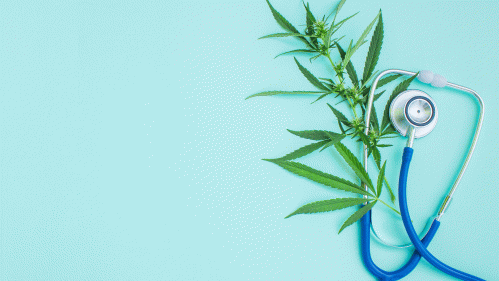Rutgers researchers propose new way to assess medical marijuana use
Cannabis use disorder is defined by the Diagnostic and Statistical Manual of Mental Disorders as a problematic pattern leading to clinically significant impairment or distress, with symptoms that may include increased tolerance, withdrawal symptoms, strong desire to use marijuana and spending large amounts of time using cannabis.
Tammy Chung, director of the Center for Population Behavioral Health at Rutgers Institute for Health, Health Care Policy and Aging Research, along with colleagues Marc Steinberg of Rutgers Robert Wood Johnson Medical School and Mary Barna Bridgeman of the Rutgers Ernest Mario School of Pharmacy, published a commentary in JAMA Psychiatry calling for an important clarification of the way cannabis use disorder is diagnosed,specifically for people who use cannabis for therapeutic purposes. Chung explains why.
What are the challenges to accurately diagnosing cannabis use disorder?
Chung: One of the challenges involves the rapid increase in state-level legalization of cannabis for therapeutic purposes – also known as medical marijuana.
Specifically, the manual used to define substance-use disorders was developed before the sharp rise in cannabis use for therapeutic purposes. This means that the diagnostic manual considers cannabis to be an illicit substance, even if a person reports cannabis use only for therapeutic purposes and uses cannabis purchased from a dispensary under appropriate medical supervision, with a valid medical cannabis card.
We suggest the diagnostic manual take into account, as separate from recreational cannabis use, the use of cannabis for therapeutic purposes, given its increasing prevalence. This important distinction is made to avoid misdiagnosis, particularly for individuals who only use cannabis for therapeutic purposes under appropriate medical supervision. This suggested modification to diagnosing cannabis use disorder is similar to the way in which other substances – such as opioids and sedatives, both prescribed and also considered illicit substances – are already treated in the diagnostic manual.
Since cannabis for therapeutic purposes is only recommended, not prescribed, this raises other challenges, such as the absence of a standard dose due to different ways of consuming cannabis (vaping, edible), the lack of dosing guidelines for specific health conditions, the need for greater regulation of cannabis products and limited or mixed evidence regarding the therapeutic effects of cannabis for many health conditions.
What do you see as the issue with the current version of this diagnosis protocol
Chung: The manual’s diagnosis of cannabis use disorder requires an individual to meet only two or more of 11 criteria. These criteria might include only increased tolerance for cannabis and withdrawal symptoms, which are commonly reported by individuals who use cannabis for therapeutic reasons.
People who report these two criteria would technically meet criteria for a cannabis use disorder diagnosis. However, these two symptoms alone may not represent problematic use.
Explain the changes you propose to the diagnosis.
Chung: In our proposed model, tolerance to cannabis effects and withdrawal symptoms cannot be the only two criteria used to determine if an individual shows impairment in daily activities when taking cannabis for therapeutic purposes. If two or more other symptoms are reported, such as difficulties cutting down on cannabis use or use in hazardous situations – like driving while feeling the effects of cannabis – the standard model of diagnosing an individual with cannabis use disorder can still be used.
Our suggested model is based on the one used to diagnose substance use disorder in an individual who has been prescribed medication, such as opioids or sedatives. When taking a prescribed medication, such as a sedative or a recommended therapeutic, such as cannabis under appropriate medical supervision, symptoms of tolerance and withdrawal may occur as a result of a daily-dosing regimen. Notably, the manual uses different guidelines for diagnosing substance use disorder for a prescription medication and for an illicit substance. We suggest a similar approach could be used to avoid misdiagnosis among individuals who use cannabis only or mainly for therapeutic purposes under appropriate medical supervision.
Why is it important to clarify how cannabis use disorder is diagnosed?
Chung: There are limitations to the criteria used to diagnose cannabis use disorder when applied to people who use cannabis for therapeutic purposes. Specific training in assessing the criteria in the context of an individual who uses cannabis for therapeutic purposes could improve the validity of cannabis use disorder diagnoses.
Our model addresses the critical need to improve how cannabis use disorder is diagnosed in individuals who use cannabis for therapeutic purposes. Misdiagnosis, particularly overdiagnosis, represents a medical error with stigmatizing consequences for an individual. Critically, this error could result in flawed understanding of the effects of therapeutic use of cannabis on health because there is potential for misdiagnosis when using the standard diagnostic model for patients who use cannabis only or mainly for therapeutic purposes.




